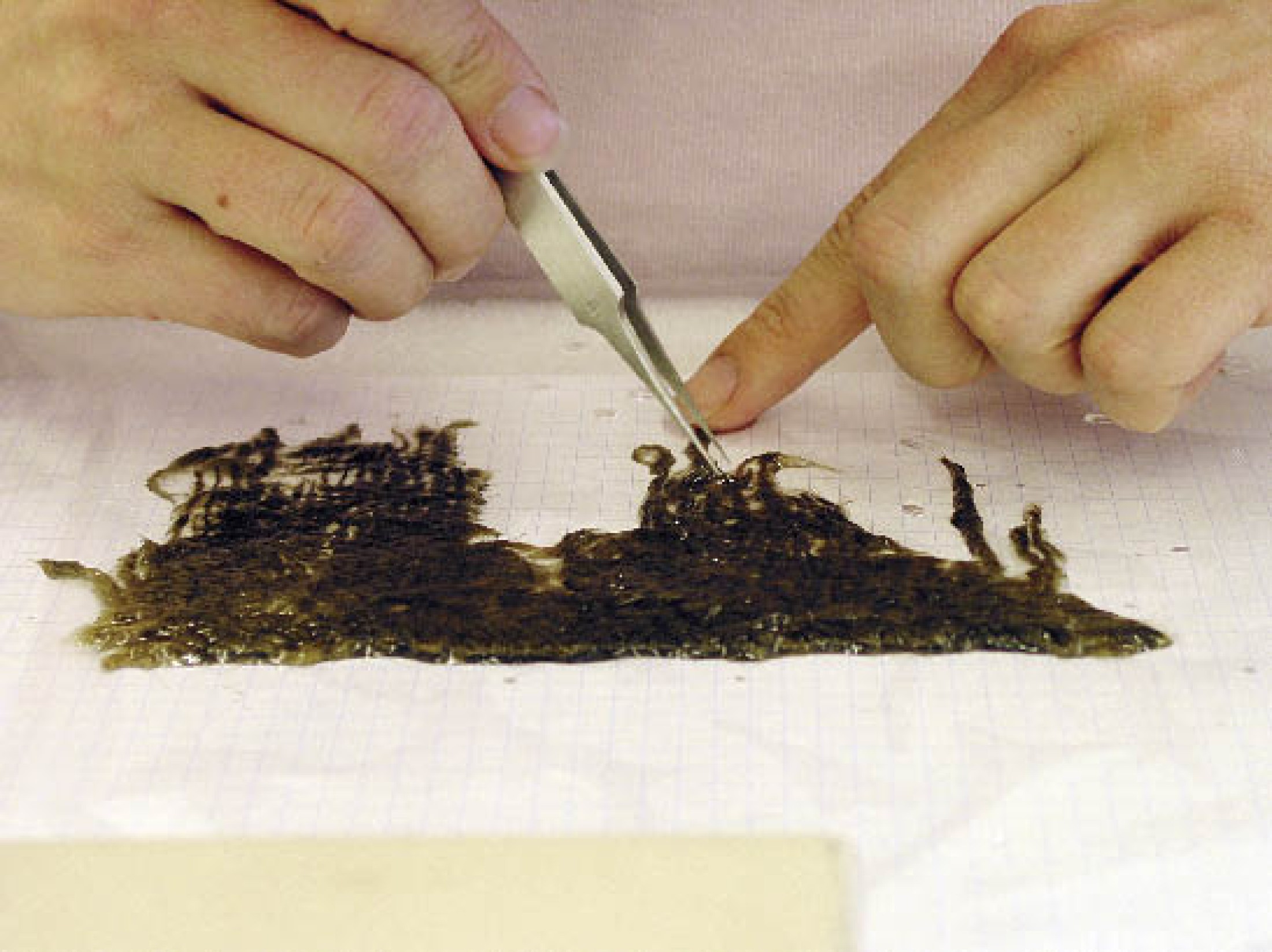Research into Hallstatt textiles
The earliest discoveries of textiles in Hallstatt date back over 160 years. These finds give researchers a unique opportunity
to trace the development of textile technology in Central Europe in one single location from 1500 to 400 BC. Textiles
found in the prehistoric mines at Hallstatt have been preserved in excellent condition, while those from the nearby burial
site are generally in a state of extreme decay. The pieces of fabric from the mines are among the most important prehistoric
textile finds in Europe. When put together, they form 300 different items comprising over 700 individual pieces.
The period during which these textiles were produced and used - from the Middle Bronze Age until the early La Tène Period
- is characterized by many developments in fabrics and materials. Furthermore, the fact that the conditions in the mines have
preserved all kinds of textiles in an excellent state (both plant-based materials and wool) makes analyses of how textiles
developed over the course of time particularly interesting. Thanks to the unique finds made in Hallstatt, textile research
is today one of the major focuses of the NHM’s Department of Prehistory
(Groemer, K. – Loew, C.)


